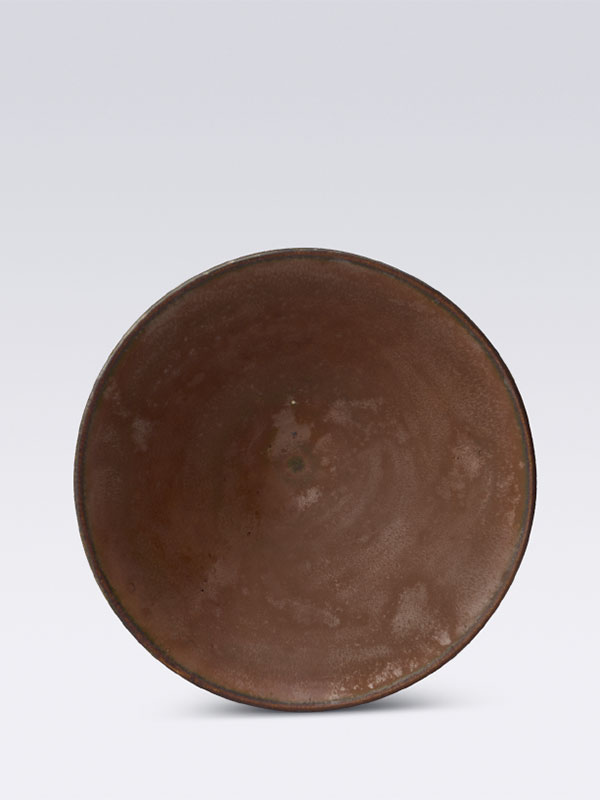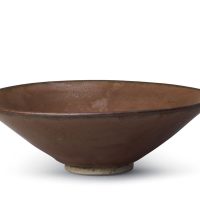Stoneware conical bowl with russet glaze
China, Song dynasty, 960 – 1279
A stoneware bowl of conical form, the thinly potted straight sides rising at a sharp angle from the low, neatly cut foot. The bowl is covered in a thick glaze of russet tone, which is applied on a green-coloured undercoat that is most apparent at the rim and on the exterior. The base is unglazed and shows the fine-grained, buff-coloured stoneware.
Delicately potted, easy to handle stoneware conical bowls were made for the drinking of tea. During the Song dynasty, the red tea commonly consumed in earlier periods was gradually supplanted by a foaming white tea. As a result, dark-coloured glazes became more popular, because white tea looks more appealing against a dark background.[1] Attribution to a specific kiln is always complicated with russet glazed wares, as they were produced in several ceramic centres. Whilst the accomplished potting, unadorned form and metallic sheen of the glaze are reminiscent of russet glazed ding wares, such as a covered bowl in the Qing Court collection at the Palace Museum in Beijing[2], it is likely that this sophisticated little bowl is a product of the Cizhou kilns in Northern Henan province. A similar bowl, described as Cizhou ware, is in the Barron collection.[3]
Provenance:
Ben Janssens Oriental Art, February 2008
Private Collection, UK
1 Rotondo-McCord, L. Heaven and Earth Seen Within – Song Ceramics from the Robert Barron Collection, New Orleans Museum of Art, 2000, p. 82
2 Palace Museum, Beijing Complete Collection of Treasures of the Palace Museum Vol. 32, Hong Kong, 1996, no. 85, p. 94
3 Rotondo-McCord, L. op. cit. no. 26, pp. 82-3
北宋/山西窑口柿釉斗笠盏
斗笠盏为宋代重要的茶道具,中国南北方的多个窑口均有烧造斗笠盏的历史。此盏线条挺拔,通体施柿釉且施釉及底。釉面带有金属光泽,符合北宋时期山西地区所产柿釉器物的釉面特征。修足干脆利落,胎色偏白。


